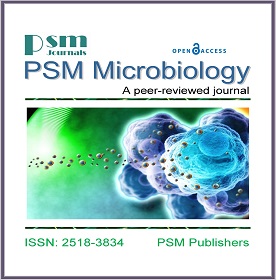Utilisation of Pesticides by Soil Microorganisms
Keywords:
Biodegradation, Herbicide, Organophosphorus Insecticide, Pesticide, Soil.Abstract
While pesticides are considered somewhat essential in modern agriculture, their indiscriminate use has been linked to loss of biodiversity and ecosystem function as well as accumulation in food produce and the poisoning of groundwater. The utilisation of selected pesticides by microorganisms isolated from soil samples was observed. The pesticides tested were the organophosphorus insecticide – Diazinon and Herbicides – Primextra 500FW and Vetox 85. Detection of a zone of clearing was used to identify the Vetox 85-utilising microorganisms. Utilisers of Diazinon and Primextra 500FW were isolated by enriching the soil with mineral salt broth and providing Diazinon and Primextra as sole carbon and energy sources. This method was equally used for the in vitro degradation of the pesticides. Degradation was monitored using total viable cell numbers, pH and optical density. Generation times and growth rates of selected utilisers were determined. The Vetox 85-utilisers were found to be 0.32% of the total aerobic heterotrophic counts. The pesticide-degraders isolated were Vibrio, Acinetobacter, Pseudomonas, Arthrobacter, Flavobacterium, Bacillus, Aeromonas, Rhizopus and Penicillium species. Vibrio, Acinetobacter, Pseudomonas, Arthrobacter and Rhizopus were selected for degradation studies. Vibrio sp. showed the greatest pesticide utilisation capacity unexpectedly surpassing the mixed cultures, however, mixed cultures generally showed better degradative capacities than single cultures. Vibrio sp. had the highest growth rate while Rhizopus sp. had the lowest; Rhizopus sp. consequently showed the highest generation time alongside the mixed culture of Vibrio sp. and Acinetobacter sp. while Vibrio had the lowest generation time. The results showed that while these pesticides are relatively biodegradable in vitro, they are only utilisable by a limited number of indigenous soil microorganisms.




